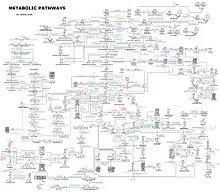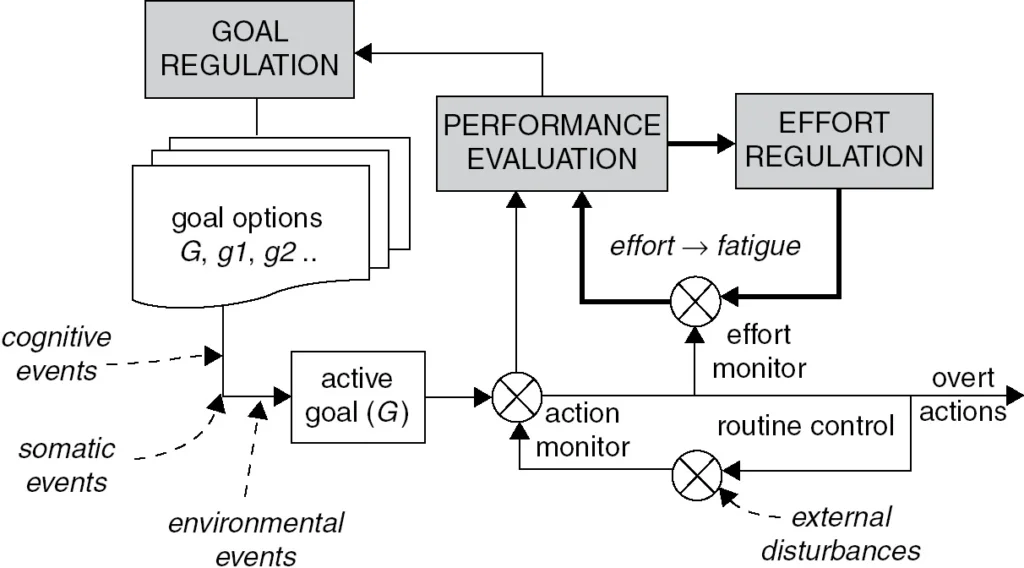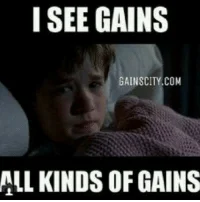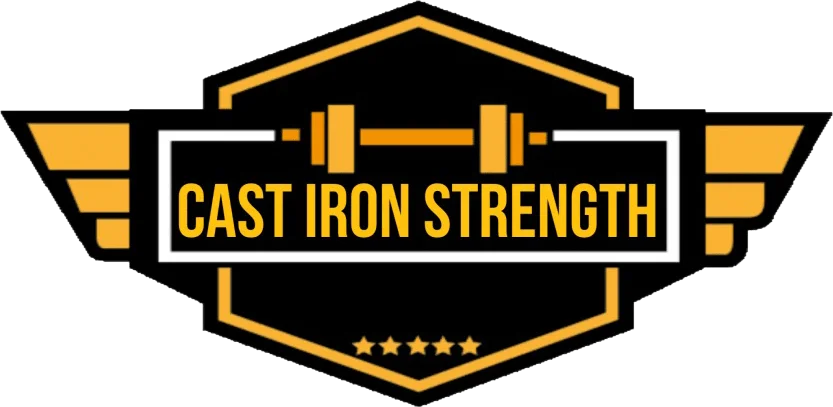The willy nilly use of words like training systems, the XYZ method, and god knows what other name has always annoyed me in the strength training world. You could argue it’s me just being pedantic or projecting my own beliefs onto other companies and their names and you would probably be correct on both counts. During this article, I want to explain why the use of the words systems and methods annoys me so much when people are talking about simple loading schemes, microcycles or flow charts.

Annoyance 1 – Systems have inflows, outflows and stocks. Strength programs for the most part don’t.
During my blog post series about a systems-based approach to training a blog series, I will get round to completing honest. I discussed these aspects of systems-based thinking and how they would apply to training.
The main point being that a system is a living breathing thing that has inputs (inflows), stock (amount of something in the system), and outflows (things moving out of the system) for the vast majority and I do mean the VAST majority of strength training plans they are merely flat loading schemes pasted together in 4-8-12-16 weeks schemes with no real elasticity or ability to adapt to new inputs or changes in situations.
The notion that going from a loading scheme that takes low intensity and higher volumes and runs down in volume over time and increases the intensity in a pre-planned manner (linear) to a week of training that represents a mixture of low volume/high load and high volume/low load training and doesn’t really change over time (undulating) represents some kind of paradigm shift is not only laughable but it also shows just how simple and uncompelling most training ideas are. Not to even mention that these simplistic templates are somehow held up with any kind of reverence.
For example, if you adopt the “Westside Method” which in reality is a 1-week microcycle that has variables you can change each time you run the microcycle. If you were to change the program up or vary it then obese neckbeards on internet forums and youtube comments sections will squeal at you for not training the west side method anymore. Realistically without someone to lead and change the training based on the inputs, they are receiving from the group or the individuals performing the program then you don’t have a system or a method you just have a week’s worth of training.
The very fact that one of the biggest rallying calls from this kind of training is that if you alter the “XYZ” training cycle or block then you are no longer doing “XYZ” anymore and if it goes wrong on your head be it. Systems have to be adaptive to be a system without the ability to adapt; it’s just a loading pattern. It’s not a plan, it’s a dictate. Injuries happen and people don’t respond to training in a linear and predictable manner forever so if you don’t account for this then you are being either overly simplistic or naive and more importantly for this article by definition it’s not a system.

Annoyance 2 – We assume knowledge or learning that no one has access to
While the above annoyance might be leveled more at the less sophisticated coaches or bloggers this is probably more aimed at the pseudo-sophisticated. There are a bunch of sports science memes that people latch onto for dear life because they offer some kind of plug and play feedback loops into their training programs here are some examples of these
- Heart rate variability
- Chronic Workload / Acute Workload ratios
- Rate of perceived exertion
- Bar path
- Velocity measurement
- Subjective wellness
These can be useful tools for strength training while some are pretty much completely useless an example of 4 of the above in these contexts
| Intervention | Perceived usage | Reality in context |
| Acute v Chronic workload | Keep progression in load in line with correct zone (no more than 50% swing up or down of previous work load) | Lifters don’t do anywhere near enough workload for this to be a useful metric. Being based on professional field sports this metric has pretty much no bearing on an athlete who trains 10-15 hours a week most of which is static. As hard as a lot of lifters think they work their workloads are miniscule compared to a lot of field athletes. |
| Bar Path | Achieve the most optimal movement for you body | End up chasing down rabbit holes and getting lots of false positives. A straight up and down bar path is great when it works but it doesn’t work for everyone and you can end up sacrificing a good individual technique to make a lifter conform to a predetermined standard. |
| Velocity measurement | Provides objective measurement for loading and should auto-regulate automatically | Takes some agency away from the lifter and coach and can lead them to over complicating the training process. Also assuming your device is accurate and reliable and you are using metrics that match up with reality and your goals. This is a metric I really like however think it’s an over complication for the vast majority of people. |
| Heart Rate Variability | Provides an objective measure of recovery. | This is a metric that got a lot of traction and publicity 3-5 years ago in elite sport however as it’s shaken out it’s not as good a predictor of recovery as was first thought. Like a lot of new ideas it’s a bit of a gimmick and definitely not something we should be using as recreational or even elite strength athletes to lead our training decisions. |
There is a lot of science in sports science. Things like physiology, biomechanics, and psychology really can help to increase the amount of and the quality of options and training decisions we can take. However, training is a process, and if we put the science before the coaching/decision-making process then we are putting the cart before the horse.
Whilst there are a lot of things we can use as mechanism or inflows into the systems ultimately if you
- Keep a detailed and accurate training log
- Have a regular and open discussion with your coach
- Use these two points of feedback to adapt your training plan/trajectory
Then you are going to capture the 20% of training planning and feedback that is going to make 80% of the difference. Coaching and programming aren’t about knowledge, science, and information. It’s about contextual decision making.

Annoyance 3 – the use of over simplistic language and concepts
Which is the best rep range for size gain?
As a question, it encapsulates a lot of what I find frustrating and annoying when talking to people about programming or training. You see, although neat boxes make sense in our minds and make understanding what we want to understand a lot easier, reality in its complexity doesn’t operate in ordered boxes. It is incredibly messy and complex.
A lot of the generalities of training and training outcomes have been found out by those who went before us. They worked out training variables and how they or their athletes reacted to those training variables. Long before big Brad started pumping out training studies to validate ideas that had existed for decades. Bodybuilders had already come to the conclusion that 3-4 sets of 8-12 reps done close to failure was the best overall way of achieving increased size. There are studies coming out showing that 3×10 at a more moderate weight is just as effective for training for size as 10×3 at a much heavier weight as long as the volume of work is pretty much accounted for. They concluded such groundbreaking realizations that 10 sets of 3 took longer to complete than 3 sets of 10 and that training heavy triples all of the time carried a larger risk for injury than 3×10 at a moderate weight especially when the goal of the program is size.
These studies need to be done by more people than just Brad and his mates. We need larger studies, more studies, and repeated study design so we can start building up a larger body of evidence and to make the science we use and the conclusions we draw from it much more robust.
Moving on in reality as long as you put the body/organism under the correct kind and amount of stress and allow it to recover then you receive the adaptation you want. Your body doesn’t know or care if you are doing squats, leg press, deadlifts, hypers, etc. It doesn’t know or care if you are doing 3s, 10s, 15s, 20s. It doesn’t know or care if you are using good form or bad form.
Your body doesn’t have any agency or opinion of its own it’s a collection of 37.2 trillion cells that has somehow found itself with a meat computer that is smart enough to interpret the world and has decided it wants to get better at lifting metal off the floor or to get bigger cells and look more jacked and tanned. Your cells don’t give a fuck, your body doesn’t give a fuck it just reacts to the inputs the organic computer puts it through.
When people start talking about optimal ways of training or systems that produce optimal results you can presume they are talking bull shit. There is no optimal there is better and worse. That better or worse needs to be put into a context for it to be better or worse. 3×10 @ 65% is a better choice to start a program for someone who wants to get bigger. 3×10 @ 65% is a worse choice for a weightlifter with a competition in 3 weeks.
You have a person with a goal, who has a timeline, a training history, and an individual response to training. A system will take these inputs and design a structure to utilise and it will use the outputs and stock-flow to adjust these inputs and try and work towards a better solution in this context.
Someone who just takes a metric shit load of bias and fires it onto the person with a goal etc isn’t doing anything other than shoehorning, someone, into their own biased mold. Round peg, square hole well you better start looking more like a square if you are going to start fitting in here my friend.
Systems aren’t simple. The world isn’t simple. Stop talking like a simpleton.

Annoyance 4 – no way to quantify and balance fatigue management
When we interact with training we are purposely inducing fatigue it’s a hugely important topic in strength & conditioning and program management you could even go as far to say as it’s the S&C coach’s main job to balance fatigue. There are a lot of concepts in fatigue management and how it can be monitored and used as an input two of the most common are a wellness questionnaire and probably heart rate variability. There are multi-million-pound companies whose sole aim is to help their users quantify their fatigue and recovery such as woop.
It is an important factor to get a handle on as if we are feeling fresh and underworked then it is a sure sign we aren’t under a large amount of training volume and therefore our fitness is probably going to be low. Likewise, if we are under systemically large amounts of fatigue we are likely to end up overworked/under recovered and either overtraining or injured.
Again the truth is that we don’t have a really well-established understanding of fatigue the science on it is progressing. The amount understood now from when I graduated in 2008 from my master’s program is pretty astounding however there is still a very long way to come. An excellent Instagram to follow if you want to see the extent of the research on fatigue is – https://www.instagram.com/chrisabeardsley/
It’s safe to say we are still pretty far away from having a full-proof objective marker of fatigue however, to be honest, we don’t really need it a coach and lifter who keep open good channels of communication can take advantage of when the lifter is feeling good and pull back whenever the lifter is feeling like shit.
The whole point of setting out a program or a plan is to make sure there is planned progression and that the lifter is following a loading pattern that is going to make sure they aren’t under or overdoing their training stress. However depending on the many factors that make up a lifter and their life such as their adaptation to the training they are doing but also their nutrition, work, social lives, and sleep to name but a few factors all interplay to influence the athlete’s response to the load they are under. In some instances, a training block that would have been completely feasible for a lifter or maybe even a reasonably easy training block could present an overreach or too much for them if they are struggling to sleep or they are going through a stressful period at work.
The job of the system is to take in the inputs, to then put that information into context, and then to work toward decisions and modifications to present better options. A spreadsheet doesn’t do this.

Annoyance 5 – no way to keep the good times rolling
In the same way that having inputs that help to guide decisions when it comes to fatigue management there needs to be an ability to not change the plan, to not take a deload, to go another week, to add another set, to put more weight on the barbell. When you set out a planned loading scheme in the same way you don’t really know if it’s going to be too much you don’t know if it’s going to be enough.
A lot of coaches or athletes who follow programs will use hard rules such as a deload every 4th week. But what if training is going amazing you’ve put the weight up for what should be the peak weak of the block but you are at the same or even less of an RPE than last week, you maybe even do an extra set and you still feel top of the world.
You have a great week of training, enter into your deload week and as you’re warming up you feel even better than last week! But coach or the program has in their omniscience programmed 5×45%, 5×55%, 5×65%, and minimal assistance. Do you
1 – Stay with the program and spunk what could have been another week of personal bests up the wall or maybe even 3-4 more weeks of crushing it to start the next part of the spreadsheet or block
2 – Go off program do a one-rep max and then keep it from your coach or ignore the spreadsheet and potentially carry too much fatigue into the next aspect of the program and end up having a shit block.
3 – Keep doing what you have been doing. It ain’t broke so why the fuck are we going to try and fix it.
Regardless of how experienced, knowledgeable, or gifted of a coach or athlete you are there are going to be plenty of instances and moments when your intuition is going to let you down. The job of a program or system is to try and limit the influence your own personal bias has on a situation to allow you to see what is signal and what is noise. If you are constantly fucking about with the knobs of the program taking deloads on this week because of “reasons”, changing exercise variations all the time, changing sets x reps all the time you are going to miss out on a lot of what works a lot of the time.
As much as there should be the ability for a program or training plan to adapt and pull back when needed on a moment’s notice or on a whim it should also have the ability and facility to take advantage of bright sparks in training.
In Conclusion
Training is an organic process where we make decisions on the order, amount, intensity, and guise that the exercise stressors we interact with come in time. The whole point of the training process is to try and produce regular and positive increases in the fitness abilities you are training towards. To best do this we need a systematic approach to training.
A spreadsheet or some cockamamie loading scheme isn’t a system or a method it’s a fucking spreadsheet or a bunch of words typed onto a word document.
Systems and training processes involve the systemic use of inputs, context, decision making and feedback. If you can’t change the plan it’s not a system it’s a spreadsheet you don’t want to change.
Marc
